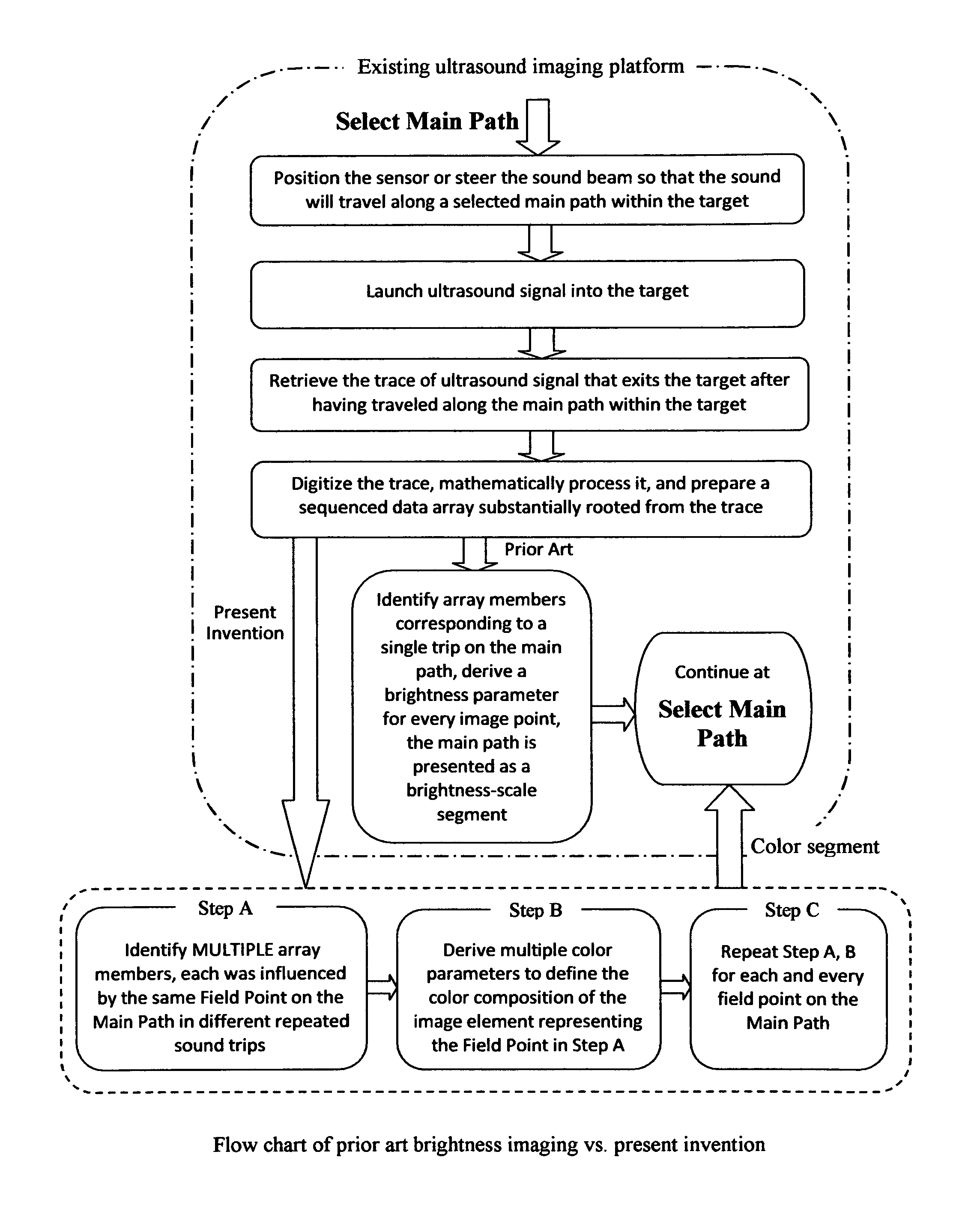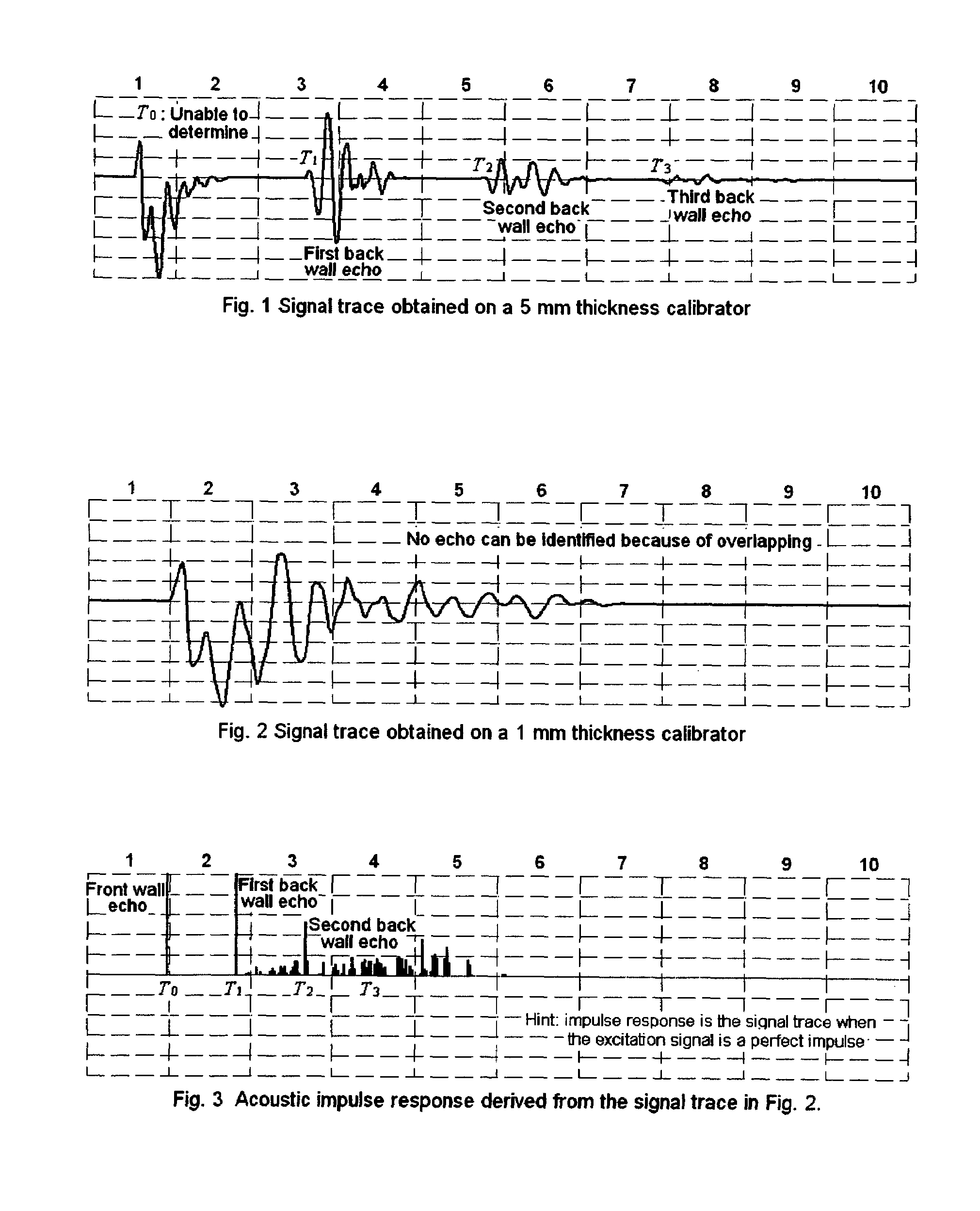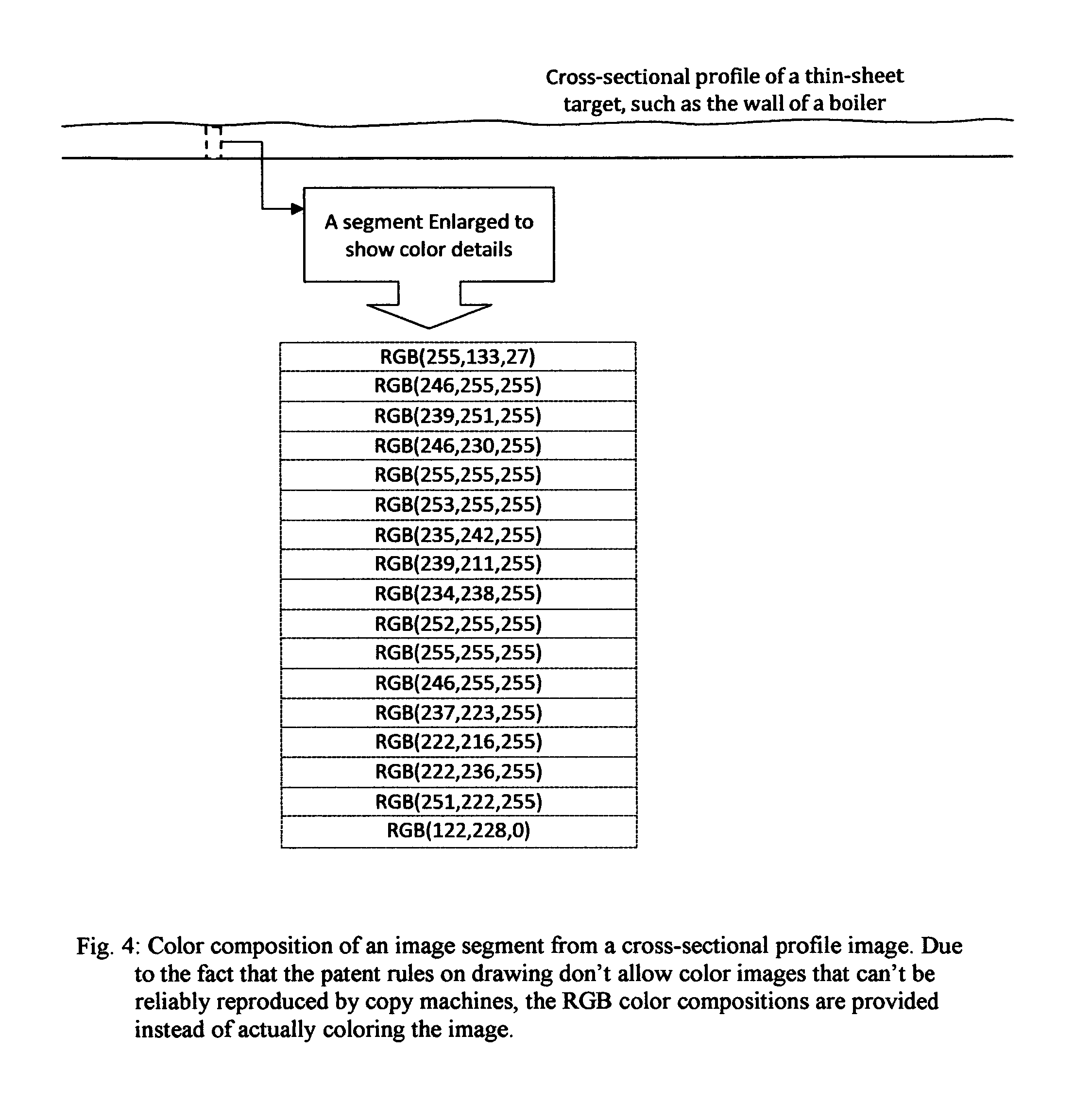Ultrasonic color imaging characterizing ultra-fine structures and continuously distributed physical conditions
a color imaging and ultra-fine structure technology, applied in the field of non-destructive ultrasonic medical and industrial inspections, can solve the problems of limited improvement, unused invaluable information left in conventional ultrasonic imaging for decades, and inability to accurately characterize ultra-fine structures, etc., to achieve significantly easier and preferable ultrasonic ndt, the effect of reducing the false detection ra
- Summary
- Abstract
- Description
- Claims
- Application Information
AI Technical Summary
Benefits of technology
Problems solved by technology
Method used
Image
Examples
Embodiment Construction
[0042]This invention discloses methods and apparatus for ultrasonic color imaging that characterizes ultra-fine structures and distributional physical conditions within the target under inspection. The disclosed method complementarily incorporates information arising from a plurality of repeated sound trips forced by repeated reflections of exterior and interior interfaces of target, and visualizes the information into an image segment representing the main path that ultrasonic signals have traveled within the target. An image that is substantially more discriminative, descriptive, and position-sensitive to both acoustic interfaces and distributional acoustic characteristics of the target, is achieved as the result.
[0043]The invention is especially useful for thin sheet targets most vulnerable to both non-continuous and continuous interior defects. The continuous interior conditions and effects of ultra-thin layered structures are effectively expressed in color image details.
[0044]T...
PUM
 Login to View More
Login to View More Abstract
Description
Claims
Application Information
 Login to View More
Login to View More - R&D
- Intellectual Property
- Life Sciences
- Materials
- Tech Scout
- Unparalleled Data Quality
- Higher Quality Content
- 60% Fewer Hallucinations
Browse by: Latest US Patents, China's latest patents, Technical Efficacy Thesaurus, Application Domain, Technology Topic, Popular Technical Reports.
© 2025 PatSnap. All rights reserved.Legal|Privacy policy|Modern Slavery Act Transparency Statement|Sitemap|About US| Contact US: help@patsnap.com



